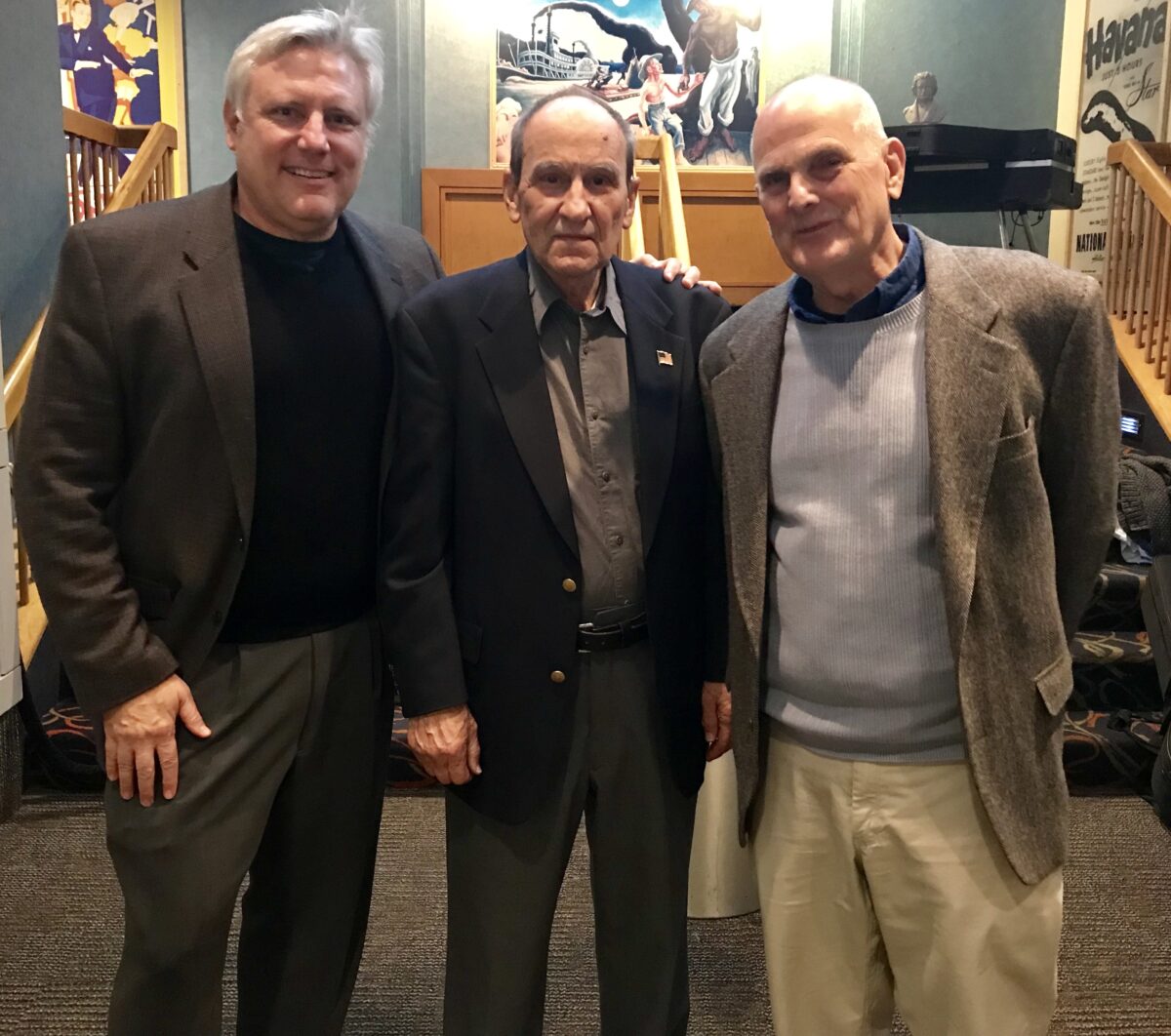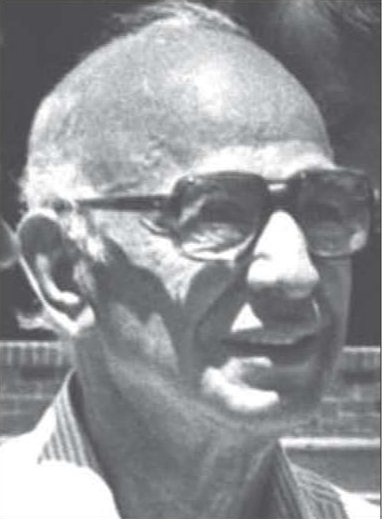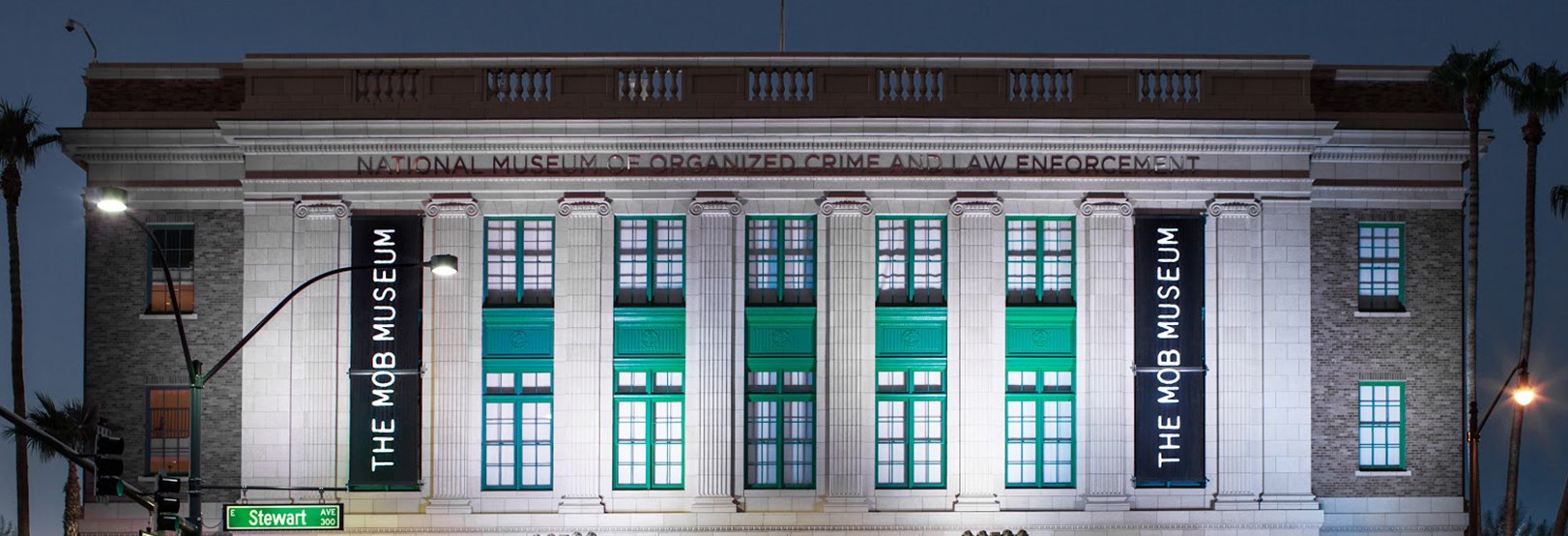
The Kansas City connection
Film festival highlights Mob’s role in Las Vegas skim

In the 1995 movie Casino, the Mob’s control of skimming at Las Vegas casinos is exposed when authorities learn about it from a surveillance microphone in a Kansas City grocery store.
That’s not exactly how it happened.
In reality, the bug was planted at a dinner table with bench seats in a now-demolished Kansas City pizzeria, the Villa Capri. Hoping to learn about late-1970s warring Mob factions in this Missouri city on the Kansas border, authorities instead uncovered a bombshell: Kansas City’s Civella crime family illegally controlled a money pipeline originating from inside the Las Vegas Strip’s Tropicana hotel-casino. Blaring in the background at the pizzeria, adding an ironic soundtrack to this underworld setting in a town ripped by targeted Mob explosions and shooting deaths, was the Bee Gees’ disco song “Stayin’ Alive.” (“Feel the city breakin’ and everybody shakin’…”)

In time, authorities discovered that tens of thousands of dollars in untaxed gambling revenue — the skim — unlawfully made its way monthly from Las Vegas casinos to the Civellas and other Mafia organizations in the Midwest. As a result, Mob operatives from Kansas City, Chicago and elsewhere were imprisoned in later court convictions.
These milestones in Mob history took center stage at the two-day Kansas City Mafia Film Festival over the Thanksgiving weekend in the MTH Theater at Crown Center, featuring the documentary films Gangland Wire by Gary Jenkins and Black Hand Strawman: The History of Organized Crime in Kansas City by Terence M. O’Malley. At the November 24 screening, retired FBI agent William Ouseley joined the filmmakers in a question-and-answer session before a capacity crowd.
The Crown Center is near the historic train station where, in June 1933, four law enforcement officers were killed in an unsuccessful attempt by Charles Arthur “Pretty Boy” Floyd and other outlaws to free a friend being transported to the Leavenworth federal penitentiary in Kansas. The prisoner, Frank “Jelly” Nash, captured in Hot Springs, Arkansas, also was killed at Union Station in what became known as the Kansas City Massacre.
The Depression-era shootout, while important in understanding Kansas City’s lawlessness in those days, was only a backdrop, not the focus of the film festival. The city’s Mob history is what the festival highlighted.
As was clear at the event, the Villa Capri is not the only place in Kansas City of importance to Mob historians. The town is full of significant Mob sites, including a former underworld hangout called The Trap and a residential area once known as “the Mob neighborhood.”
It was in Kansas City, after all, where the notorious Pendergast political machine, entangled with the city’s early organized crime figures, controlled public officials while manipulating the election process from the Jackson County Democratic Club on Main Street. Among other things, this corrupt machine also elevated a failed Kansas City haberdasher named Harry Truman to statewide office, paving his way in the mid-1940s to the U.S. presidency.
During the early Pendergast era, with the police department under machine control, Kansas City became the heartland’s decadent home of Jazz Age gambling dens, brothels and all-night taverns. Pendergast machine leaders and mobsters benefited from the cash flow generated by unchecked vice.
The city’s raucous ways made national news when, in 1950, inside a different Democratic headquarters near a giant picture of Truman, two local Mafia figures were slain in a high-profile bloody shooting. This double homicide created a major stir, according to author Anthony M. DeStefano.

“The outcry over the killings reverberated in Washington, D.C., which had just begun to grapple with the problems of organized crime,” DeStefano writes in his 2018 book Top Hoodlum: Frank Costello, Prime Minister of the Mafia.
Soon, Senator Estes Kefauver, D-Tenn., launched a congressional investigation into organized crime, with hearings in cities across the county. While Kefauver’s anticrime efforts succeeded in drawing attention to the Mob, years passed before the Kansas City Mafia family was hobbled, beginning in part with that June 1978 surveillance audio inside the Villa Capri pizzeria.
Another key Mafia site from that year is a residence known as the Marlo house. Located north of downtown across the Missouri River in a quiet neighborhood with weathered wooden privacy fences, the single-story residence once belonged to Josephine Marlo, a Civella relative. It was there in November 1978 that the Tropicana’s Carl Thomas, a then-respected member of the Las Vegas business community, explained to local mobsters how skimming operations worked inside Nevada casinos. He even boasted about some of his skimming exploits. Joining him at the Marlo house that day was another Mob insider from the Tropicana, Joseph Agosto.
What none of them knew is that authorities had bugged the home and were recording the profanity-laced explanations that Thomas gave to the Civella crime lords in attendance. Among them was Nick Civella, head of the organization, who lived nearby in a large corner house with a sloping lawn. The meeting was held at the Marlo house because Civella thought his residence would attract too much law enforcement attention. Civella had been in Apalachin, New York, for the infamous 1957 Mafia summit and later was included in Nevada’s Black Book, barring him from entering casinos across the state.
A transcript of the Marlo house audio is included in Jenkins’ 2016 book Leaving Vegas: The True Story of How the FBI Wiretaps Ended Mob Domination of Las Vegas Casinos.
On the audio, Thomas is heard talking about how much money is easily removed from casinos and how important it is to have a person under your control working on the inside.
“You skim off forty thousand a week in dollars and grab the forty thousand ‘C’ notes and nobody knows that,” Thomas tells the mobsters. “The guy that reads the scales is your guy. You got to have your guy reading the scales. I bought one of them myself: The scale cost me fifteen thousand, but my guy reads it.”

Thomas, who later regretted talking so much that day, was convicted of skimming but became a government witness in another trial and was released early from prison, ultimately dying in 1993 at age 60 in a single-vehicle rollover in Oregon. A decade earlier, Agosto died of a heart attack at age 61. All the Civella leadership at the Marlo house that day also have died.
Over time, the public’s understanding of Kansas City’s role in American organized crime has grown, with authors and filmmakers such as those at the recent festival providing detailed insights.
Jenkins, an attorney and former detective in the Kansas City Police Department intelligence unit, now operates the Gangland Wire website, which includes actual surveillance audio from those days. For his role in helping topple the Civella crime family, Jenkins is even mentioned by name in Nicholas Pileggi’s 1995 book Casino: Love and Honor in Las Vegas, which was the basis for the Scorsese movie.
That’s not to say everyone understands Kansas City’s importance — or even its location. On the day before the film festival began, New York-based Vogue magazine published a general travel guide on its website in which the writer, Marley Marius, conceded she didn’t know where Missouri is. Marius notes that she thought Missouri “was one of those states jammed shoulder-to-shoulder below the Mason-Dixon line, like Georgia and Alabama.”
“I imagined my flight path to Kansas City International roughly following that to Raleigh-Durham,” she writes, “suggesting, I think, that I had my destination confused with Mississippi.”
Those interested in Mafia history are a lot more familiar with the city. Among this group, there is an expectation that Kansas City will continue to attract interest from historians studying the Midwest Mob’s influence over Las Vegas in the years before corporate control of Las Vegas hotel-casinos, and a series of criminal convictions, pushed the Mob out of the Silver State.

For the most part, the Mob also has been eliminated from Kansas City. As Ouseley notes in his 2011 nonfiction book Mobsters in Our Midst: The Kansas City Crime Family, the criminal syndicate that had “a negative impact on life in Kansas City ended with the Civella era.”
“There are those who sought to perpetuate the organization but they found the climate and conditions no longer favorable,” Ouseley writes. “The Civella power bases — political influence, union influence, monopoly of gambling operations and others that made the Outfit what it was — are gone.”
Ouseley, a former FBI Organized Crime Squad supervisor in Kansas City, also wrote 2008’s Open City: True Story of the KC Crime Family, 1900-1950.
During its heyday before Nick Civella’s death from cancer in 1983, the Kansas City Mafia was an active fixture on the American criminal scene, as O’Malley notes in Black Hand/Strawman, a 2011 companion book to his documentary film. Several years ago, O’Malley, a Kansas City attorney, appeared in an episode of Anthony Bourdain’s No Reservations, discussing the city’s Mob history. On the Travel Channel’s website where the episode is posted, Kansas City is described as “the BBQ capital of the world.” O’Malley and Bourdain were filmed inside one of the town’s notable barbecue restaurants, B.B.’s Lawnside Bar-B-Q.
A single sentence in O’Malley’s companion book sums up what that television episode also addressed — the Kansas City Mob’s former prominence.
“When asked to speak on the subject of organized crime,” O’Malley writes, “I often will tell audiences that whether Kansas City likes it or not — for better or worse — it had one of the best Mafias in the United States.”
Larry Henry is a veteran print and broadcast journalist. He served as press secretary for Nevada Governor Bob Miller, and was political editor at the Las Vegas Sun and managing editor at KFSM-TV, the CBS affiliate in Northwest Arkansas. Henry taught journalism at Haas Hall Academy in Bentonville, Arkansas, and now is the headmaster at the school’s campus in Rogers, Arkansas. The Mob in Pop Culture blog appears monthly.
Feedback or questions? Email blog@themobmuseum.org





